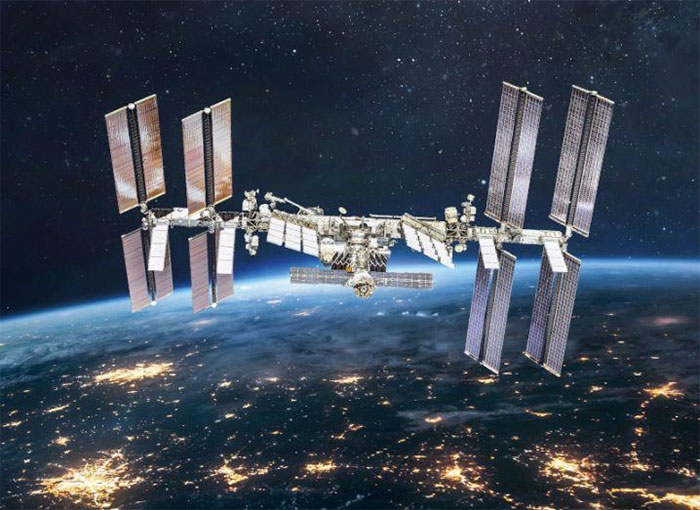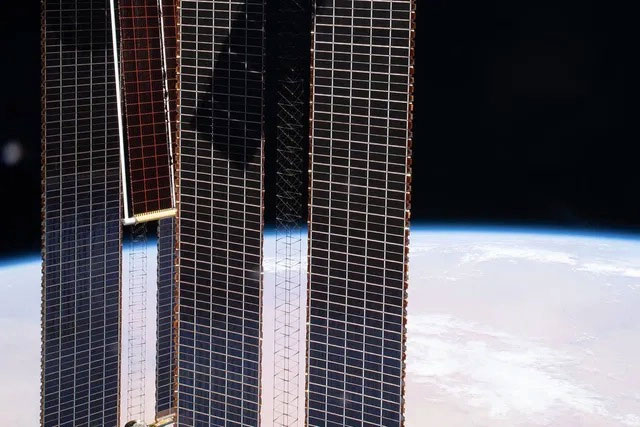Three spacewalks will be required to enhance the energy supply capabilities of this aging space station.
In the coming weeks, astronauts aboard the International Space Station (ISS) will conduct a series of three spacewalks. This is part of a long-term plan to upgrade the station’s outdated electrical system.
The ISS utilizes large solar panels to capture energy from the Sun and convert it into electricity for use. This energy powers all activities on the station, from life support and temperature control to communication with Earth and propulsion systems that allow the station to avoid space debris.

The ISS requires a significant amount of energy to maintain operations.
The ISS’s electrical system consists of eight solar arrays that extend out from the main module like wings. For a long time, they have been able to meet the ISS’s power demands, generating an average of 84 to 120 kilowatts of electricity. However, some arrays are over 20 years old and were originally designed for a service life of only 15 years, showing signs of degradation.
This does not mean that the old arrays will suddenly fail or stop functioning—although the station has experienced electrical issues in the past—but it does mean they are gradually becoming less efficient over time. With an increasing number of complex scientific experiments being conducted on the station, the demand for electricity is also rising.
Anthony Vareha, who will lead the first spacewalk on November 15, explained: “Some of the power-generating strings on those solar arrays have gone offline. However, this was anticipated in the original power construction plan.”
To meet the growing demands, the ISS has continuously upgraded its electrical system, including replacing arrays in previous spacewalks. However, new arrays now need to be added, which is the primary goal of the upcoming series of space missions.

An iROSA solar array deployed in 2001. Solar arrays are gradually being added to the ISS to enhance its available energy levels.
Upgrades to the power system include adding six new solar arrays, which will be positioned in front of the old arrays, allowing power to be drawn from both. Measuring 18 meters long and 6 meters wide, the new arrays, known as ISS Roll-Out Solar Arrays, or iROSA for short, will be smaller than the old arrays, which are 34 meters long and 11.8 meters wide. However, advancements in solar panel technology mean that the new arrays can produce electricity equivalent to the original arrays.
However, this will not be a straightforward process. Before an iROSA array can be added, it requires a support structure to be installed outside the station. Vareha described the two-part process: first installing the scaffolding and then installing an array. Currently, the ISS has two of the new iROSA arrays already installed. Scaffolding is ready for two more arrays, and the scaffolding for the final two arrays will soon be installed, starting with the upcoming spacewalk on November 15. This will be the first spacewalk for two NASA astronauts, Josh Cassada and Frank Rubio.
The subsequent two spacewalks are tentatively scheduled for November 28 and December 1, with the mission to install two additional arrays onto the existing scaffolding. The ultimate goal is to have all six arrays installed and operational by mid-next year.
Chris Mundy, the operations officer for the space mission, stated that the new arrays will be loaded onto a cargo ship during the SpaceX CRS-26 resupply mission, which is set to launch on November 18. After that, the arrays will need to be installed, integrated into the electrical system, and deployed. Deployment involves the process of unfolding the arrays, which takes between 6 to 10 minutes.
To integrate with the electrical system, astronauts need to install cables to connect both the old and new arrays to the electrical system. Mundy said: “Once they are fully connected, we will be able to route power from the legacy array and the new iROSA array into the ISS electrical system.”
NASA has indicated that these new arrays are being tested for use in future missions, such as the Artemis Moon program, as well as to help the space station continue its operations. The future of the ISS remains uncertain. While NASA announced late last year that they plan to continue operating the ISS until 2030, Russia, another major partner, has repeatedly threatened to withdraw from the collaboration, leaving the ISS in a precarious situation even as it undergoes significant upgrades.
“Each new array will bring new power,” said Fiona Turett, NASA’s flight director. “The ISS continues to evolve, and we have more scientific research and more systems online. This additional power will ensure we can operate the ISS at maximum capacity in the coming years.”
- 7 extremely popular questions about the world that everyone confidently thinks they know, but are actually misconceptions
- Little-known stories about the only Southeast Asian team to participate in the biggest football festival on the planet in 1938
- Death from 11.5 billion years ago bombards NASA: A chilling forecast for us


















































